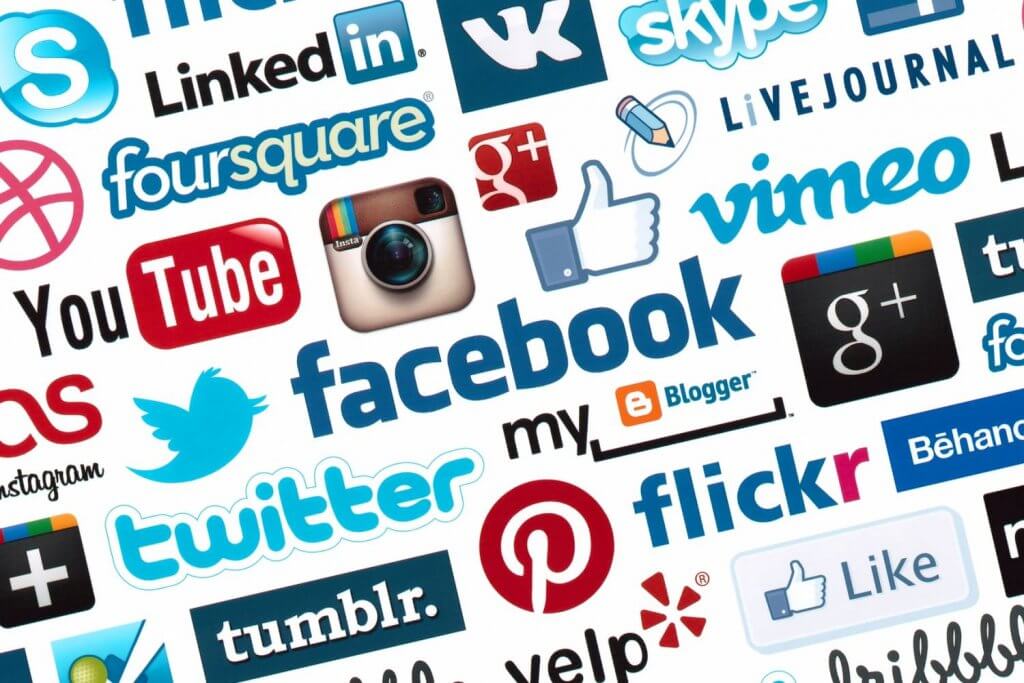Social Networks: Good Manners

Aspects of human life – whether business, friendship or love – are increasingly “digitised”, but in the virtual world, they are still met with the same dress and manners. Digital etiquette, the same netiquette or network (from English “net” or Russian “network”) is a set of standards for comfortable online surfing and online communication.
Partly, the norms of netiquette are spelled out in the official legislation – it’s about the most fundamental precepts: do not stir up ethnic hatred, do not call for violence and extremism, do not spread pornography, do not violate copyright, etc. Prohibitions vary from country to country. For example, you can get a very real fine or a term in jail for insulting religious values or disrespecting the ruling dynasty in some jurisdictions.
However, a law-abiding person does not necessarily mean a cultural and pleasant person. Tacit, but generally accepted, rules of the network, which were invented and recommended for compliance by internet users themselves, contain much more.
Self-presentation
Is it permissible to refuse a job candidate because “I did not like the Facebook profile”? How indicative is this aspect of a candidate’s worth? Considerations may be made about what friends a candidate has, the contacts listed in the profile or photographs of vacations on a beach. If a profile is “closed”, again this is bad: then, there is something to hide!
The logic is suspect, but it perfectly illustrates the general trend: without knowing their beautiful soul, people will inevitably be judged by their appearance or their profile in social networks. Therefore, looking at yourself and your page as if from the side is very useful for cultivating your image. Is it not strange to look like an avatar in a white dress and veil ‘in active search’? Comments like “I’m a Woman … which means I’m an actress!!!” or “I’m hard to find, easy to lose and impossible to forget” in the column “About Myself” lead to questions about your character. Is it not better to hide the list of groups to which you are subscribed, if it so happens to include “Best Videos 18+” or “Intimate Dating in Prague”?
The content that you post on your wall really does matter. You certainly cannot please everyone and your pages on the social network are not necessarily meant to please others, but public expression still needs to have some limits.
Borders, as you might guess, were laid in accordance with the principle “do not do onto others what you would not like for yourself”. Think about your friends in social networks and try to put yourself in their place. What is it like to see, in your uploads, a lot of posts of contests in which someone often participates in the hope of a free pizza or movie ticket? Do you not see what is being conveyed when your eyes are filled with hundreds of pictures of someone else’s baby? Posting or reposting from groups dedicated to some adored actor even a couple of times a week (or hundreds of times each week) may make you look like a possessed maniac?
 Social networks provide many opportunities to broadcast information purposefully. Divide your friends into groups and address posts “only to classmates”, “only to girls from Pilates” or “all but colleagues and bosses”. With your best girlfriends, create a private chat and chat about what you want in a tight circle, not being shy in expressions. With images of a much-loved baby, smeared with mashed potatoes, send them to a loving grandmother, who is ready to absorb them in any quantity, directly and through personal messages.
Social networks provide many opportunities to broadcast information purposefully. Divide your friends into groups and address posts “only to classmates”, “only to girls from Pilates” or “all but colleagues and bosses”. With your best girlfriends, create a private chat and chat about what you want in a tight circle, not being shy in expressions. With images of a much-loved baby, smeared with mashed potatoes, send them to a loving grandmother, who is ready to absorb them in any quantity, directly and through personal messages.
Speaking of purposeful broadcasting, we can not fail to mention the technical possibility of cross-hosting, when the same post is placed automatically on several sites at once. Cross-posting cannot be called an unequivocal evil, though. It can really come in handy if you need to quickly and effectively collect opinions on some important issue, advertise something or gather people for an interesting event. Still, moderation is the key. It is one thing to launch such a ‘cry’ on all fronts a couple of times a year, when this is really appropriate, but quite another if every ‘selfie’ from Instagram, on a regular basis, crosses into Facebook, Twitter, Tumbler and Learn. You, then, may be seriously at risk of setting up your subscribers against yourself. An average person’s circle of friends in different social networks usually differs slightly and it is to no avail to expose them to the same information several times over.
In conclusion, we return to our premise. If your kind of activity is really somehow tied to your image, including social networks, it will be simpler and more effective to create a separate “working” page. Such an annex should be reserved for very decent photos and relevant specialty content. Your personal profile should be signed with an alias and/or switched to the “only for friends” mode.
Social networks: Interaction etiquette
If the internet, as a whole, can still be said to have been created in the name of scientific progress and the unification of mankind (and not only to make it possible to watch funny videos about seals anywhere in the world), social networks are, a priori, a tool for communication and entertainment. The rules of ethical behaviour in them, as a whole, are identical to those that are accepted in reality. That is, they also obey common sense, but with a correction for the features of network communication.
The main thing that must be remembered here is that the interlocutor does not see you. In a personal conversation, words are just one of the channels for information transfer. They are supplemented and refined by facial expressions, body language and intonation. In the network, you have only the words. Therefore, try to ensure that the replicas are as clear as possible and do not allow double interpretations. The benefit before sending (and sometimes after) is that the message can always be re-read and, if necessary, edited.
As an additional tool for conveying meaning, you can consider smiley-emoji and their more advanced version – stickers. In an informal conversation, it is, by no means, forbidden to use and even welcome them because they are funny and very convenient. For example, a laughing mug at the end of a sentence makes it perfectly clear that the preceding statement should not be taken literally. A disgruntled cat, sent in two mouse clicks, successfully replaces a whole long sentence like “Dear friend, I’m not at all pleased with the fact that you will be forty minutes late because, again, you did not properly calculate how long it would take to wash of your stupid head!”
Still, even here, one should know the measure, as such actions may only serve to annoy. You do not need to use twenty smileys where one or two would suffice, and in business correspondences, it would be prudent to do without them completely.
We are sure that everyone understands this, but just in case, we will clarify: With a best friend, a strict boss or a beloved woman, on the internet, you should communicate in different ways – in the same way as you do in real life.
 Write. Reread. Correct
Write. Reread. Correct
Write correctly on the network. It’s like, in real life, being clean and decently dressed. “We are not at a Russian lesson” is not an argument, especially for interlocutors much older than school age. In addition to the obvious practical function, it is imperative to convey the meaning of a statement to the addressee. Literacy is a kind of marker of respect shown to the reader, as well as one of the indicators of developed intelligence. “Dyslexia happens only with movie stars, the rest is just stupidity”, declared the charismatic hero Alexander Skarsgård in the film “War on Everyone”. It may be rude, but it is not devoid of original logic. Be that as it may, to force the interlocutor to stumble through errors is absolutely unethical, and it is better not to do so.
In addition to observing the rules of spelling and grammar, there are a few more points about the design of the text that can seriously jeopardise your credibility in the correspondence and create a biased impression of you:
- CROSS or Many Large Letters. It is customary to highlight especially significant moments in the text with large letters, expressing strong emotions, but you should not use them just anywhere. The interlocutor will seem to be shouting all the time.
- An overabundance of punctuation marks – fences of exclamation marks where there would be just one or dots instead of commas are tiresome. “I met Ivan Ivanovich !!!!” is perceived only as “I met Ivan Ivanovich – and went mad with joy”.
- Neglect of punctuation marks – no spaces after full stops or commas, as well as missing interrogative and exclamation marks are conspicuous. Such texts are hard to read and cause irritation, naturally spreading to their author.
- Abundance of typos. It is difficult to positively and respectfully perceive a person who is not willing to re-read his/her written texts. Do not rush to press ‘send’. Did you really want to send this exactly? If not, take action.
You are being watched!
For the convenience of users of social networks, developers came up with a lot of little useful things. Probably the most ambiguous among them, from the point of view of ethics, are those that allow us to observe a person, to a certain extent.
Here, for example, is the indicator of the user’s stay in the network: an addition that is both functional and useless.
On the one hand, the fact that a person is online does not mean that he is ready to communicate. Social networks are multifunctional. A person can listen to music, watch movies or play games. Perhaps the person is busy on other activities. Thus, it is unethical to aggressively tug at him and take offence if no response is immediately given. On the other hand, with such an indicator, you can sometimes orient yourself. For example, if it is already passed midnight and next to the name of the person an indication states “was online one hour ago,” one can reasonably assume that any communication will not be seen until the morning and there is nothing gained in bombarding the person with messages. Also, if a person is normally always active in social networks and the system reports that he did not go to ‘contacts’ for a week, clearly it makes sense to call and ask if everything is all right with him.
Another controversial tool is the indicator of typing (the small pencil that you see when the person is typing a message to you). Some people say that it’s ethical to disable it in the settings of the messenger so that in case of a serious conversation online, you have time to formulate your response intelligently and with adequate thought before sending, but, if you think about it, is it not better to see, in such a serious environment, that a person is not ignoring you and is still in touch? Here, everyone, probably, decides for themselves.
Do not annoy people
Sending voice messages, it is difficult to imagine how they are convenient to someone other than the sender who is too lazy to write the same thing. What if there is something secret or personal and they must, then, listen with headphones that are not always at hand? In a word, such messages always mean inconvenience and stress for the recipient and the only logical variant of their application that you can imagine is “I just put both hands in the meat grinder, but really, really want to talk.”
Writing “hello” and mysteriously falling silent. It is especially ‘nice’ to receive this from strangers when, in principle, it is unclear what to expect from them. Make an effort to elaborate, like, for example, “Hello. I believe that you weave baskets. How can I find out the prices?” or “Hello. Are you still engaged in wedding photography?” The conversation will go much more productively.
Writing more than one message, each expressing a part of your intended correspondence, while hoping that the recipient will rejoice in the five merry “ding-ding, you have a new incoming message!” notifications is completely unjustified.
Sending videos and audios during business hours and expecting an immediate response may be unreasonable, to say the least. “How is it – have you not yet looked/listened?!” is simply annoying to the receiver.
Writing “Hey, are you there? Well, where are you? Are you alive at all? Are you ignoring me?” is always too much! Communication in social networks and messengers does not imply that an instant response is forthcoming. There is always a telephone connection for discussing urgent issues or calling for emergency medical care!









